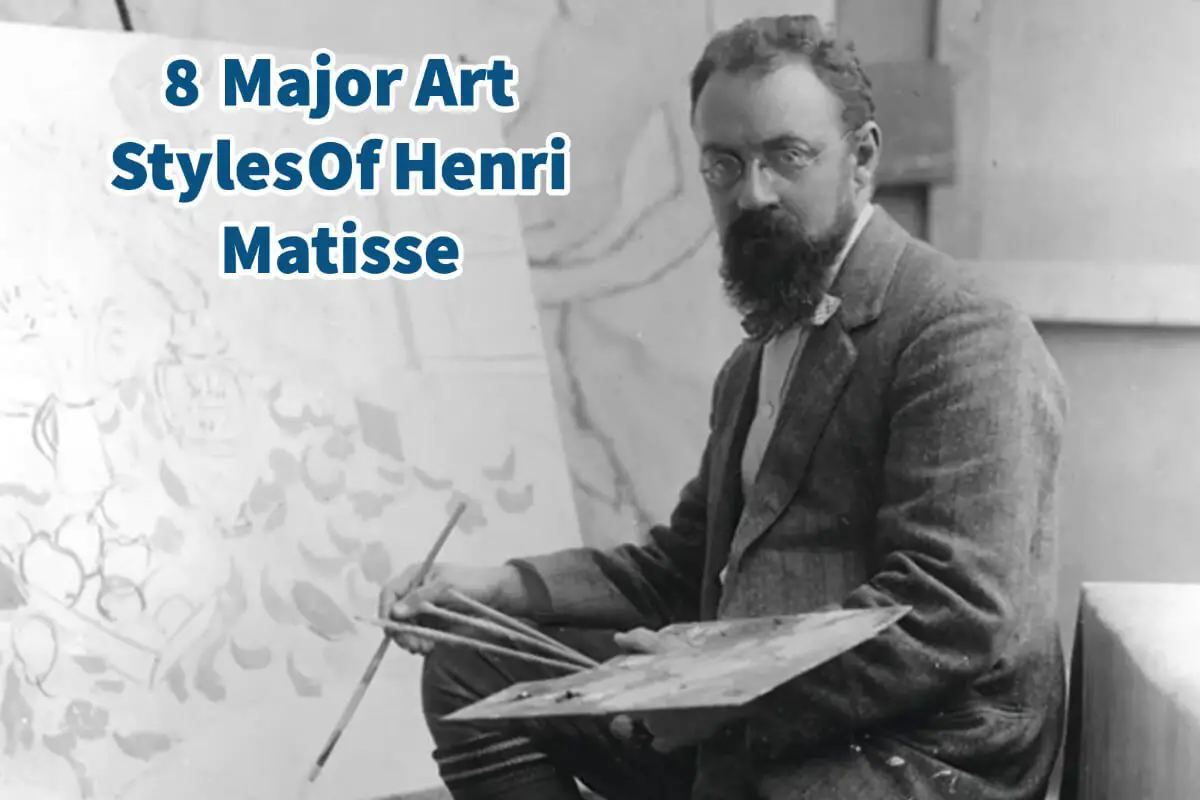Henri Matisse is a great French artist—he made such unique and exciting art. He continues to be one of the most famous artists that ever lived.
Henri Matisse was undeniably a unique artist whose artistic journey was marked by constant evolution and a fearless willingness to experiment. What set Matisse apart from his contemporaries was his distinctive artistic vision and his ability to transition between various styles and periods throughout his life seamlessly. He was not content to be confined to a single artistic identity; instead, he embraced change as an essential part of his creative process.
Table of Contents
- About Henri Matisse And His Art
- Henri Matisse: The Evolution Of An Artistic Genius – 8 Styles Explored
- Henri Matisse – Early Years Of Painting
- Henri Matisse And Growing Influence In The Art World
- Henri Matisse And Fauvism
- Henri Matisse And Working With Highs And Lows
- The Return To Artistic Order
- The 1920s And A Renewed Commitment
- World War II Occupation And Art
- The Cut Outs
- Listen To Our Podcast About Discovering Henri Matisse: A Journey Through Fauvism Below or by clicking here.
- Frequently Asked Questions
- Related Questions
About Henri Matisse And His Art
Matisse’s remarkable flexibility and adaptability allowed him to explore many art styles, reflecting his personal growth and artistic maturity. From his early works that showcased Divisionist influences to his role as a leading figure in the Fauvist movement, Matisse’s creative journey was an ever-evolving tapestry of colors, forms, and ideas.
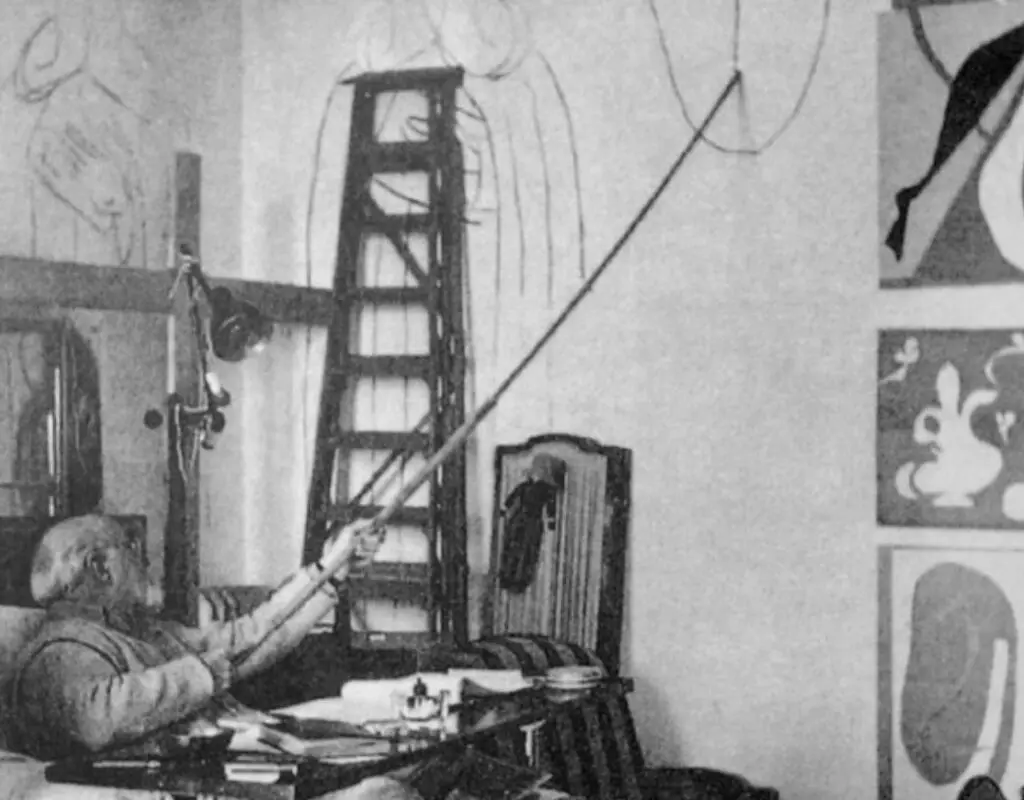
His deep admiration for artists like Cezanne and the influence of his encounters with Picasso, among other influential figures, shaped his artistic trajectory, leading to distinct periods of creativity throughout his long and prolific career.
Matisse underwent about eight significant changes in his artistic style throughout his life, each representing a fresh and innovative approach to art-making. He understood that artistic stagnation would hinder his growth and limit the expression of his inner vision.
Embracing change with open arms, he explored Primitivism, African art, and other global influences, incorporating them into his work and pushing the boundaries of artistic conventions.
Matisse’s daring reinventions were met with both admiration and criticism, but he remained steadfast in his belief that artistic exploration and transformation were essential for an artist’s development. His willingness to step outside his comfort zone and take risks led to groundbreaking masterpieces that impacted the art world.
Henri Matisse: The Evolution Of An Artistic Genius – 8 Styles Explored
Henri Matisse, one of the most influential artists of the 20th century, lived a remarkable life that spanned 84 years. His journey into the world of art began in 1889 when he was nearly 20 years old. Initially studying law, it was during a period of bed rest after an appendectomy that Matisse’s mother gifted him a set of painting supplies, sparking a passion that would drive him to become a prolific artist.

Eight major art styles marked Matisse’s artistic career, reflecting his continuous evolution and unwavering commitment to creativity and innovation.
Henri Matisse – Early Years Of Painting
In the early years of his artistic journey, Matisse found inspiration in various artists, including Van Gogh, Gauguin, Cezanne, and Rodin. However, Cezanne’s color sensibilities and compositional skills profoundly influenced him throughout his career. Matisse’s early works showcased a Divisionist style, characterized by unblended patches of color on the canvas, encouraging the viewer’s eye to blend and perceive the colors.
His focus on form and conventional subjects during this period laid the foundation for his future artistic explorations.
Henri Matisse And Growing Influence In The Art World
In 1906, Matisse met Pablo Picasso, sparking a lifelong friendship and artistic rivalry between the two masters. Unlike Picasso, Matisse often painted from life, incorporating fully realized settings for his figures. Matisse’s connections with influential figures like Gertrude Stein and teaching at the Académie Matisse in Paris helped him gain recognition and exposure in the art world.
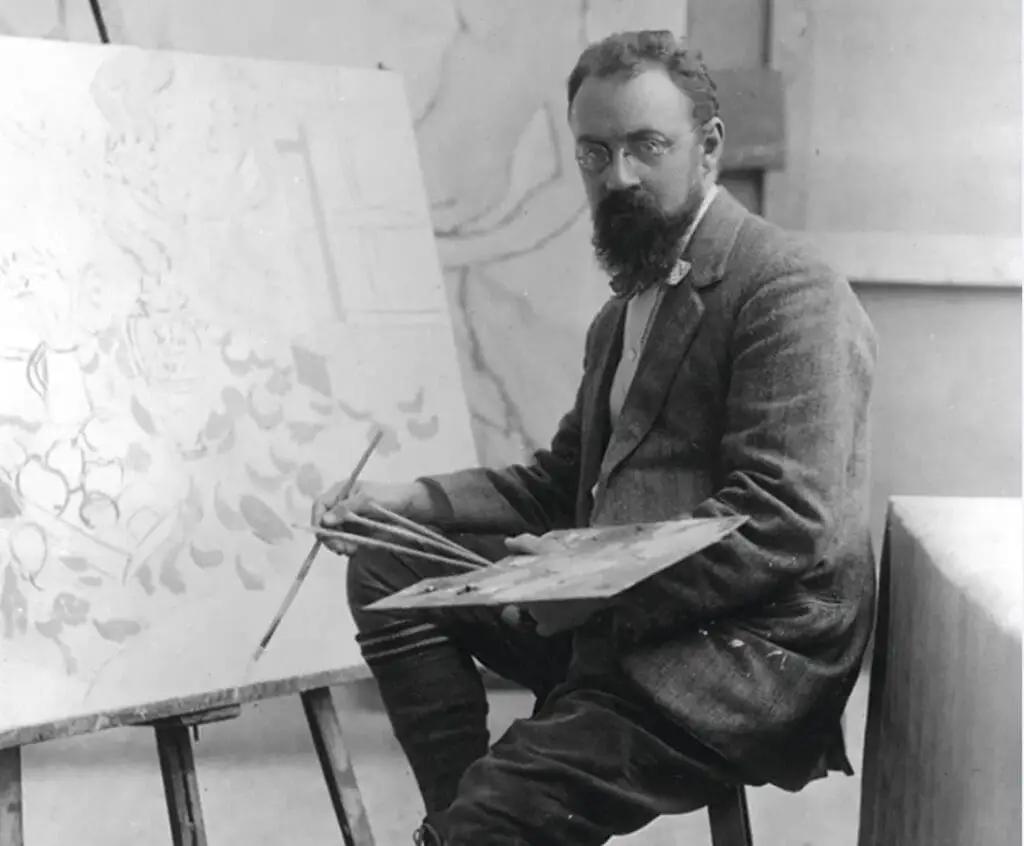
His work became a central attraction at Stein’s salon gatherings, further cementing his reputation as a prominent artist.
Henri Matisse And Fauvism
Matisse became a leading figure in the Fauvist movement, which emerged around 1904 and lasted until 1908. Fauvism was known for its wild and uncontrolled use of color, detached from the constraints of reality.
The term “Fauvism” derived from the French word “Fauves” or “Wild beasts,” which perfectly encapsulated the boldness and expressive freedom of the artists’ work during this period. Matisse’s contributions to Fauvism solidified his status as a daring and avant-garde artist.
Henri Matisse And Working With Highs And Lows
In the 1910s, Matisse’s art continued to explore bright, expressive colors and the use of planes of color with a keen focus on lines. He absorbed the visual language of Primitivism and African art during his travels to various countries, further enriching his artistic style.
While his work received praise, he also faced critical scorn and financial difficulties. Despite the challenges, Matisse persevered, creating masterpieces that have become iconic representations of his artistic genius.
The Return To Artistic Order
Following World War I, Matisse moved to Nice on the French Riviera, where he, like many post-war artists, pulled back from extreme experimentation. He embraced softer subjects and depictions, which some critics regarded as decorative and shallow. Nevertheless, this period showcased Matisse’s adaptability and versatility as an artist.
The 1920s And A Renewed Commitment
In the 1920s, Matisse reengaged with the global art community, collaborating with artists worldwide.

The 1930s brought about a newfound boldness in his work, exemplified by the creation of “Large Reclining Nude,” which foreshadowed his later shift towards simplified forms and cutouts.ad
World War II Occupation And Art
During World War II, Matisse chose to stay in France, demonstrating his commitment to the country he loved. As a non-Jewish citizen, he remained relatively safe and continued making art, displaying his work despite the turmoil. During the Nazi occupation of France, Matisse also contributed as a graphic artist, producing book illustrations and lithographs.
The Cut Outs
In the early 1940s, while recovering from surgery, Matisse discovered a new artistic passion – cutouts and collages. Embracing paper and scissors, he created vibrant and dynamic cutout murals that eventually replaced painting in his later years. The cutouts represented the culmination of Matisse’s artistic journey and stand as a testament to his unparalleled creativity and determination.
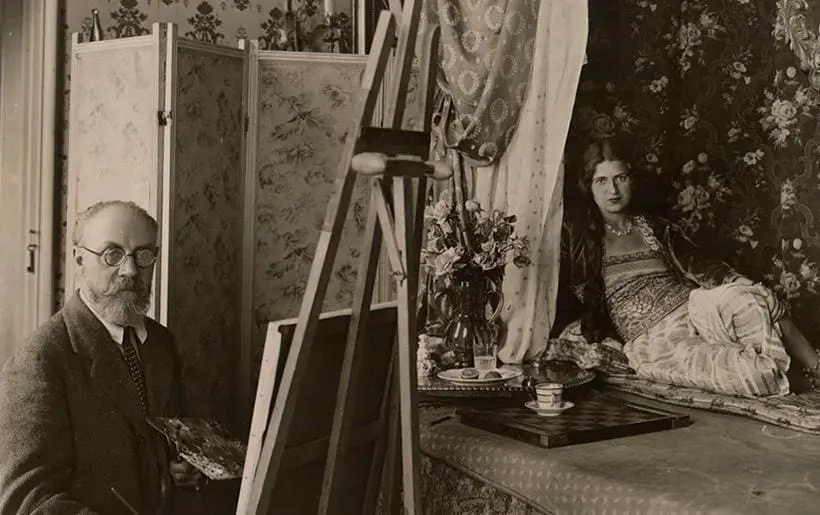
Henri Matisse’s life and art testify to the transformative power of passion and perseverance. From his early days of experimenting with color and form to his revolutionary cutouts, Matisse constantly pushed the boundaries of artistic expression.
His legacy as a prolific artist and influential figure in art remains an endless source of inspiration for artists and enthusiasts worldwide. We explore Matisse’s eight major art styles; we witness the evolution of a true artistic genius who forever changed the course of art history.
Listen To Our Podcast About Discovering Henri Matisse: A Journey Through Fauvism Below or by clicking here.
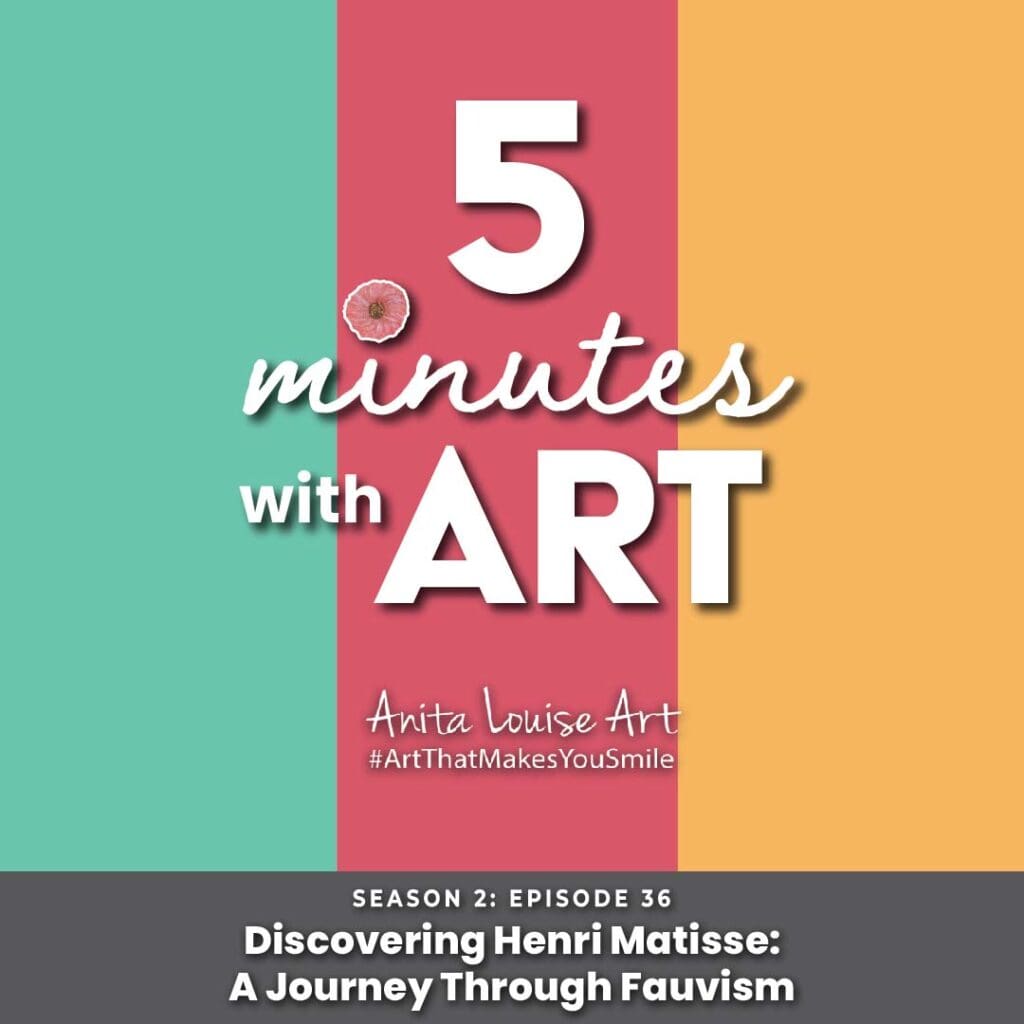
Anita Louise Art is dedicated to art education, great artists, and inspiring others to find and create their art. We love art that uplifts and inspires. #ArtToMakeYouSmile! #ArtToMakeYouHappy!
If you want to see any of my art, you can find out more by clicking here. If you are interested in what inspires me and my paintings, you can discover more by clicking here.
We have a free newsletter and would love you to be part of our community; you can subscribe to the newsletter by clicking here. If you have any questions, I would be happy to talk to you any time. You can reach me, Anita, by clicking here.
Subscribe to our Anita Louise Art YouTube Channel filled with great videos and information by clicking here.
Frequently Asked Questions
What are the 8 major art styles of Henri Matisse?
Henri Matisse explored various art styles throughout his career, including Fauvism, Post-Impressionism, Cubism, and more. The eight major art styles associated with Matisse are Fauvism, Divisionism, Pointillism, Post-Impressionism, Orientalism, Cubism, Abstract Art, and Modernism.
How did Henri Matisse contribute to Fauvism?
Matisse played a pivotal role in the Fauvist movement, characterized by bold colors and brushwork. His use of vibrant hues and unconventional color combinations, as seen in works like “The Joy of Life,” contributed significantly to the development of Fauvism.
What is the significance of Matisse’s involvement with Post-Impressionism?
Matisse’s early works were influenced by Post-Impressionism, emphasizing the artist’s departure from the naturalistic color palette of Impressionism. This influence is evident in pieces like “Woman with a Hat,” showcasing Matisse’s move toward expressive and non-realistic color choices.
How did Matisse experiment with Cubism in his art?
While not a strict Cubist, Matisse incorporated Cubist elements into his work, especially during his collaboration with Pablo Picasso. “The Dance” is an example where Matisse explored geometric shapes and fragmented forms, demonstrating his openness to Cubist principles.
What role did Orientalism play in Henri Matisse’s art?
Orientalism influenced Matisse’s work, particularly during and after his travels to North Africa. Paintings like “Odalisque with Red Culottes” showcase his fascination with Eastern aesthetics, incorporating exotic themes and decorative elements inspired by Oriental art.
How did Matisse contribute to Abstract Art?
Matisse’s move towards abstraction is evident in his later works, such as the cut-paper collages known as “cut-outs.” “The Snail” is a prime example where he simplified forms and used vibrant colors, showcasing his exploration of abstraction in a more non-representational manner.
In what ways did Matisse experiment with Modernism?
Matisse’s embrace of Modernism is seen in his willingness to break traditional artistic boundaries. His exploration of color, form, and space, as exemplified in “The Red Studio,” reflects his commitment to modern artistic principles and a departure from conventional representation.
How did Matisse’s use of Divisionism and Pointillism impact his art?
Early in his career, Matisse experimented with Divisionism and Pointillism, characterized by the use of small, distinct dots of color. “Luxury, Calm, and Pleasure” exemplifies this technique, showcasing Matisse’s interest in creating vibrant compositions through the juxtaposition of individual points of color.
What is the significance of Matisse’s “Blue Nude” in his artistic journey?
“Blue Nude” is a significant work that marks Matisse’s departure from traditional nude representations. The use of a monochromatic palette and distorted forms illustrates his willingness to challenge artistic conventions, foreshadowing his later ventures into more abstract and unconventional styles.
How did Matisse’s artistic evolution contribute to the broader art world?
Matisse’s constant evolution and exploration of various styles had a profound impact on the art world. His ability to seamlessly transition between art movements influenced subsequent generations of artists, encouraging a more open-minded approach to creativity and a willingness to break free from established norms.
Related Questions
Louvre Museum Facts, Our Top 7 Facts
The Louvre is the largest museum globally; it was once built as a fortress to protect the city of Paris. Under the French Republic’s rule, General Napoleon expanded the Louvre’s collections. One of the most important paintings at the Louvre is the Mona Lisa painting by Leonardo da Vinci.
By clicking here, you can learn more by reading Louvre Museum Facts, Our Top 7 Facts.
Why Is The Louvre Called The Louvre?
It isn’t easy to see all the exhibitions at the Louvre in just one day. This is because the museum has so much to see and somebody exhibitions. The Louvre is also one of the most visited museums in Paris and worldwide. There are millions of people each year who will go through the doors of the Louvre to visit its many exhibitions.
You can learn more about Why is the Louvre Called the Louvre? by clicking here.
What Inspired Leonardo da Vinci To Paint The Last Supper?
Duke Ludovico Sforza commissioned Leonardo to paint the Last Supper mural. What makes the Last Supper mural so unique is that he painted it at the exact time when Christ told the Apostles during The Last Supper meal that one of them would betray him. Leonardo showed the apostles’ reactions, including Judas, who betrayed Christ.
By clicking here, you can learn more by reading What Inspired Leonardo da Vinci To Paint The Last Supper?

